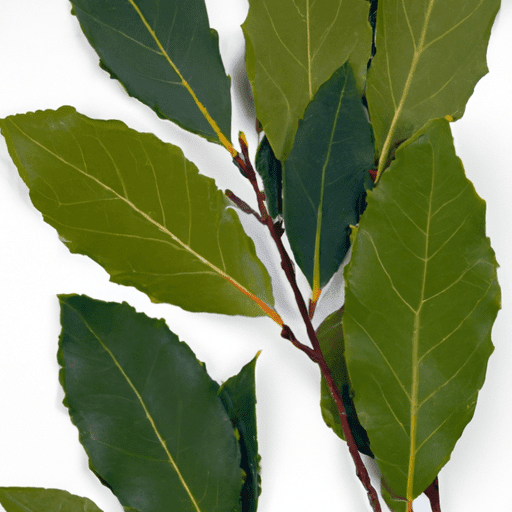Exploring the Versatile and Aromatic Fresh Bay Leaf
When it comes to enhancing the flavors of our favorite dishes, fresh herbs play an essential role. Among the many culinary herbs available, the humble bay leaf stands out for its distinctive fragrance and ability to elevate a dish to new heights. While often used subtly and sparingly, the fresh bay leaf has a lot to offer in terms of taste, versatility, and historical significance.
Aromatic Delights
Fresh bay leaves are packed with a complex aroma that is both earthy and floral, with subtle notes of citrus and pine. These leaves are known for their ability to infuse dishes with a distinctive fragrance, adding depth and richness to various culinary creations. When dried, bay leaves develop an even more potent flavor, making them a pantry staple in many kitchens around the world.
Common Uses in Cooking
Bay leaves lend their unique flavor profile to a wide range of dishes, making them a valuable addition to a variety of cuisines. These leaves are commonly used in soups, stews, and braises, where they add depth and complexity to the overall flavor profile of the dish. When preparing marinades, bay leaves add a wonderful aromatic touch, enhancing the taste of the meat or vegetables being marinated. They also play a crucial role in classic dishes like Bouillabaisse, Bolognese sauce, and Indian biryanis.
It’s important to note that bay leaves are not typically consumed directly and are usually removed from the dish before serving. This allows their flavors to infuse the dish without overpowering the palate.
Nutritional Value
While bay leaves are primarily used for flavoring and aren’t consumed in large quantities, they do offer some health benefits. These leaves contain essential oils, such as cineol and eugenol, which possess anti-inflammatory and antioxidant properties. Additionally, bay leaves are a rich source of vitamins A and C, calcium, iron, and manganese. However, due to their small size, the nutritional content of bay leaves is not significant in terms of daily recommended intake.
A Glimpse into History
Bay leaves have a fascinating history that dates back to ancient times. These aromatic leaves were revered by the ancient Greeks and Romans, who associated them with wisdom and glory. In Greek mythology, bay leaves were said to be a favorite of Apollo, the god of arts, music, and light. Crowns made from the leaves were often given to poets, scholars, and athletes as a symbol of honor and achievement.
The use of bay leaves as a culinary herb has been prevalent for centuries. They were extensively used in medieval European cooking, adding a touch of sophistication to royal feasts and banquets. Today, the culinary world continues to appreciate and utilize the unique flavors and aromas of bay leaves.
Fun Facts about Fresh Bay Leaves
- Bay leaves are believed to repel pantry insects like weevils and moths, making them a useful natural pest deterrent.
- The scientific name for the bay tree is Laurus nobilis, and it is native to the Mediterranean region.
- In some cultures, placing a bay leaf under your pillow is believed to induce prophetic dreams.
- Bay leaves are often used to flavor stocks and broths, infusing them with a subtle yet robust taste.
Fresh bay leaves truly are a culinary treasure, lending their delightful aroma and taste to dishes from around the world. From hearty stews to aromatic marinades, these leaves continue to add depth and character to our favorite recipes. So next time you reach for a bay leaf, remember its historical significance and savor the unique essence it brings to your cooking.
Fresh Bay Leaf
Origin: Fresh bay leaves come from the bay leaf tree, scientifically known as Laurus nobilis. This evergreen tree is native to the Mediterranean region but is now grown in various parts of the world.
Common Uses: Fresh bay leaves are widely used in cooking for their aromatic and earthy flavor. They are commonly used to flavor soups, stews, marinades, sauces, and stocks. The leaves are added whole to the dish during cooking and removed before serving, as they are quite tough and not meant to be eaten.
Nutritional Benefits: Fresh bay leaves contain beneficial compounds such as essential oils, flavonoids, and tannins. While the leaves are not typically consumed, they can impart certain health benefits when used in cooking. Bay leaves have been associated with anti-inflammatory, antioxidant, antimicrobial, and digestion-enhancing properties. It’s important to note that the leaves are generally used in small quantities, so their direct nutritional impact is limited.
Unique Properties: Fresh bay leaves are known for their unique aroma, which is often described as warm, herbal, and slightly floral. The leaves contain essential oils, with the primary component being eugenol, which contributes to their distinctive scent. Fresh bay leaves should not be confused with dried bay leaves, as their flavor profile is slightly different. Dried bay leaves are usually more intense and have a stronger menthol-like aroma compared to the subtler flavor of fresh leaves.
Historical Significance: Bay leaves have been used since ancient times, with records of their use dating back to the Roman Empire. In ancient Greece, bay leaves were considered sacred and associated with the god Apollo. In addition to their culinary uses, bay leaves were also believed to have various medicinal properties and were used in remedies for digestive issues, headaches, and even as a natural insect repellent.
Remember to always use fresh bay leaves from reliable sources, as wild or unverified bay leaves can sometimes be toxic. Enjoy the subtle flavor and aroma that fresh bay leaves bring to your dishes!




Use the share button below if you liked it.
It makes me smile, when I see it.